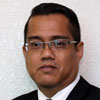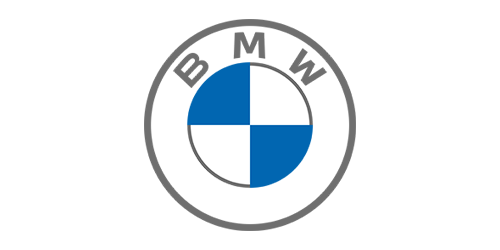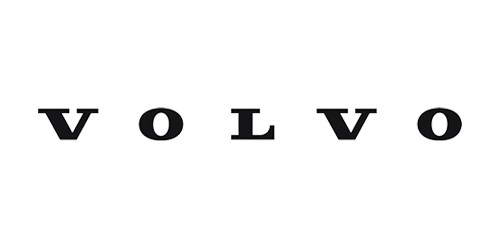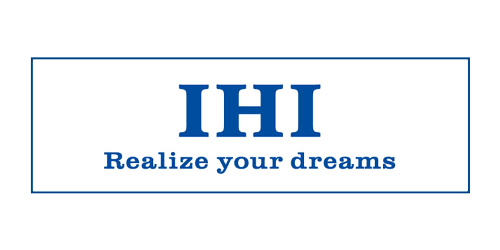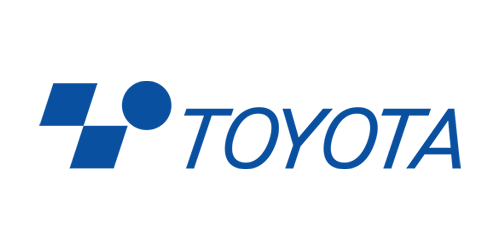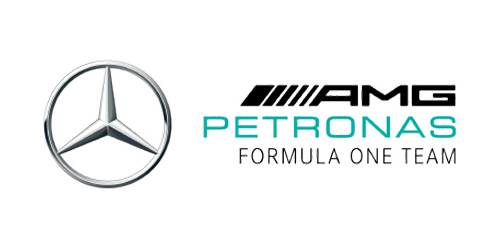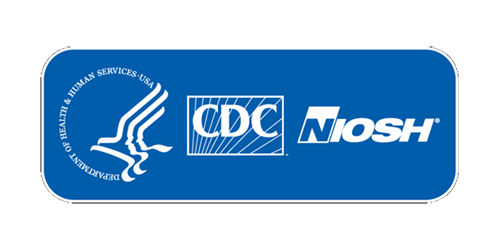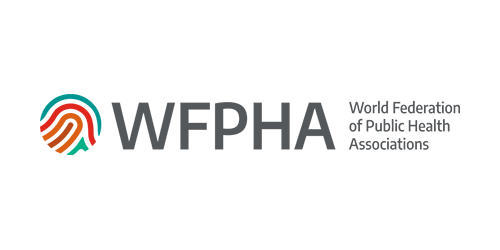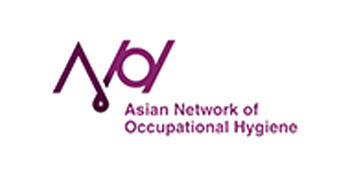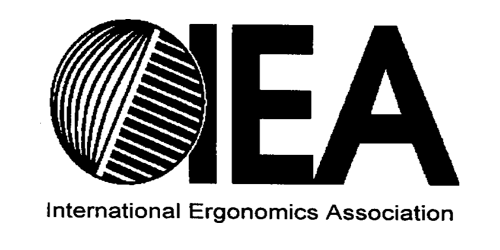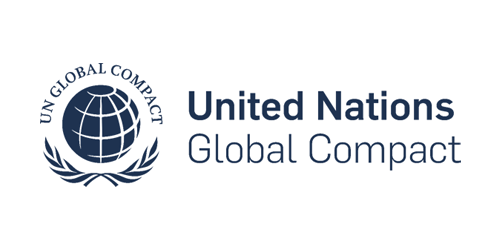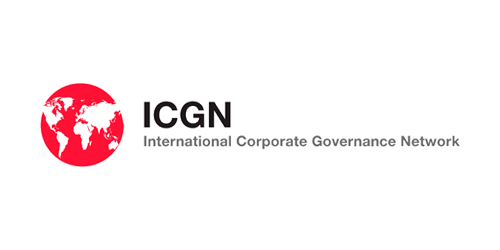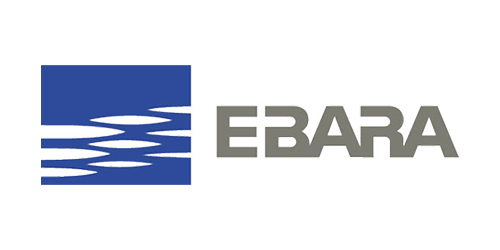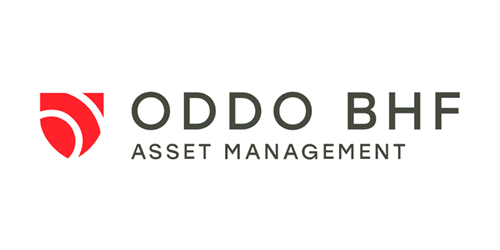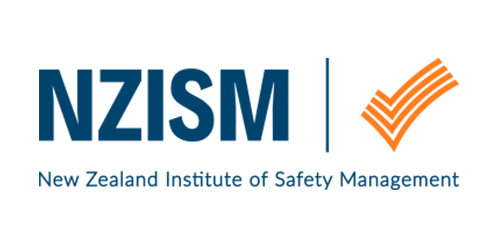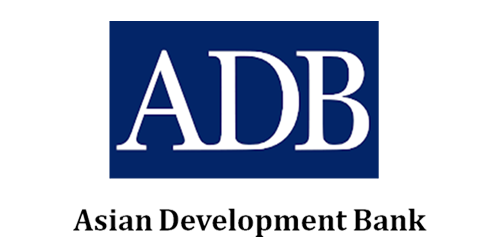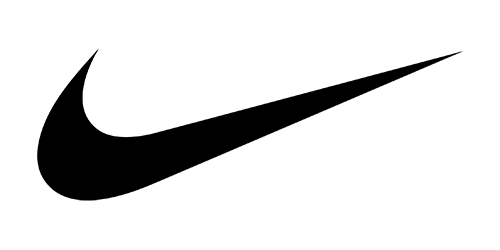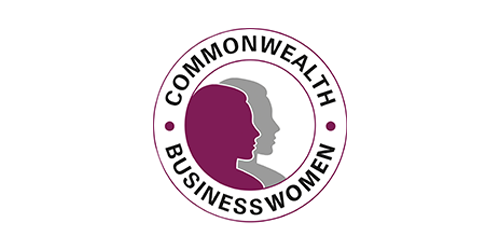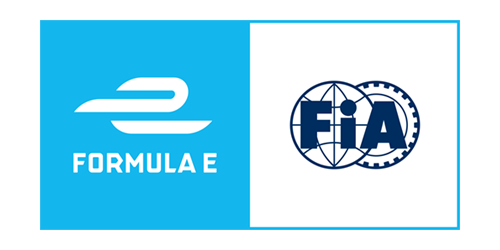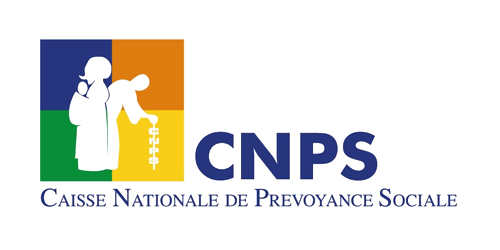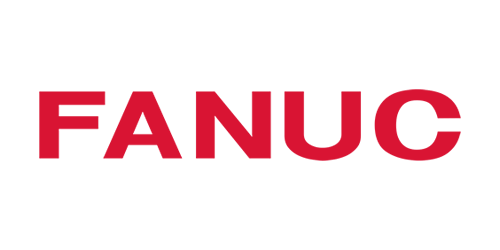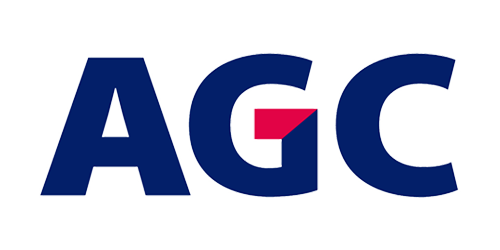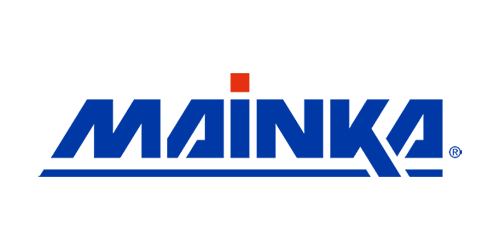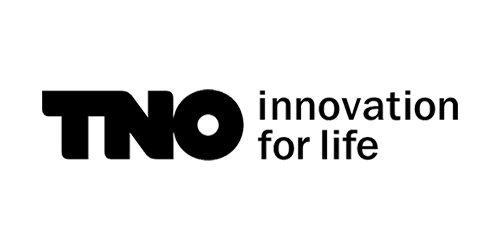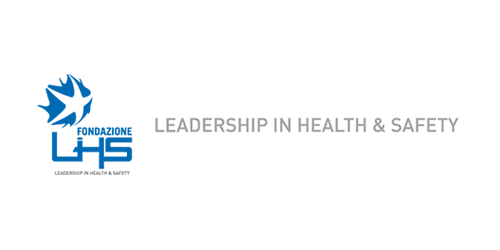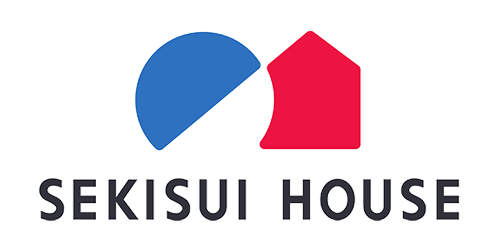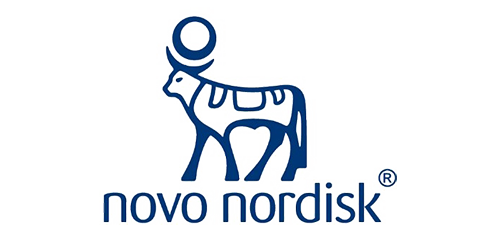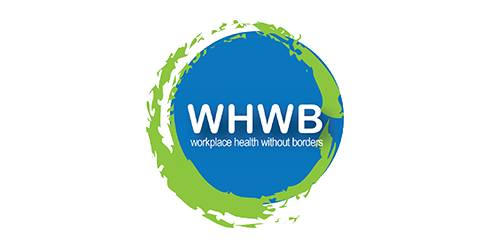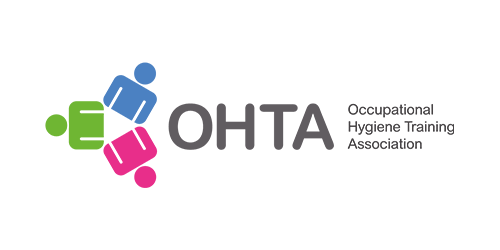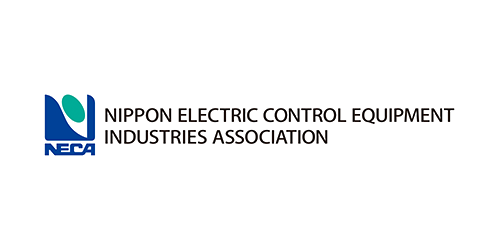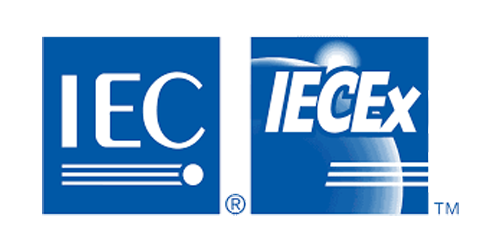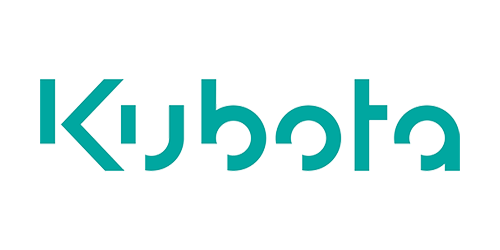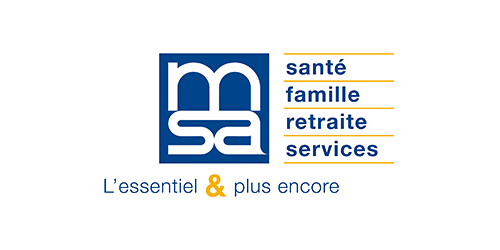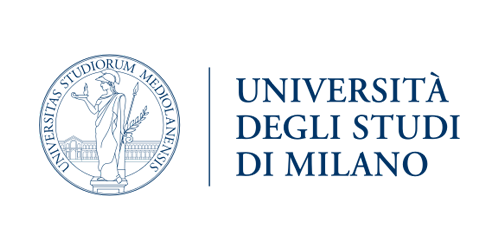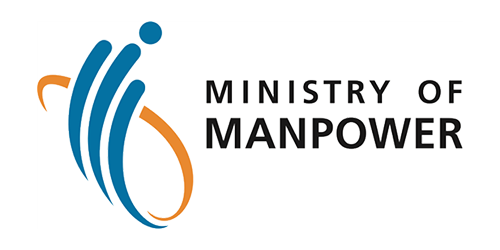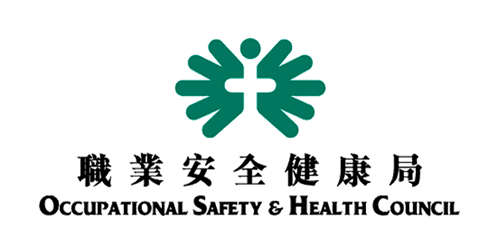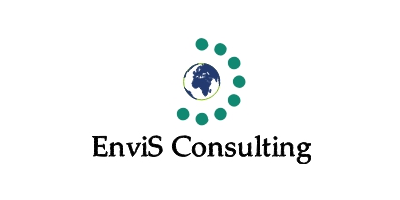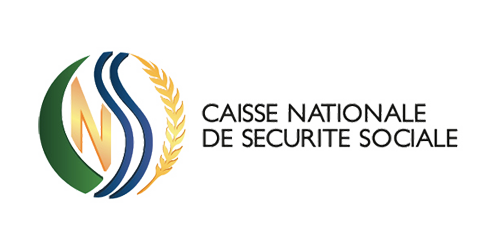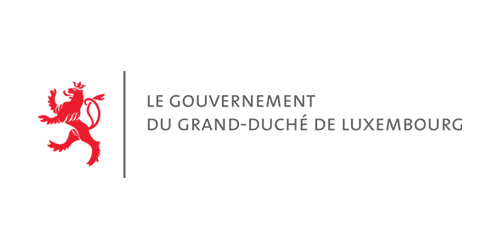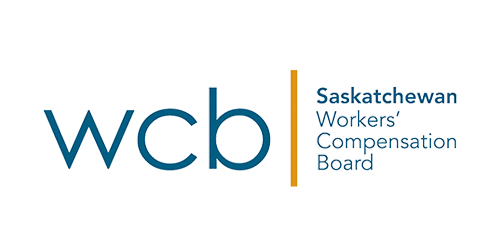
Programme

 Denmark
Denmark

Topic: 企業におけるビジョン・ゼロの実施 =ビジョンからリアリティへ=
安全・健康と持続可能性がグローバルビジネス社会において最優先事項となっているのは、ISSAのビジョンゼロキャンペーン参画企業の圧倒的な関心の盛り上がりからも明白です。ビジネスの成功は、企業にとって最も需要な資産である働く人に依る部分がかつてないほど大きくなっており、安全・健康・ウェルビーイングは、ますます企業文化の総合的な部分を担うようになってきています。本セッションでは労働安全衛生の専門家から、実際に企業がビジョンゼロ導入の過程(the Vision Zero Journey)で得た貴重な見識や実用的な経験を共有していただけます。特に注目すべきは、予防文化の構築におけるリーダーシップと、すべての従業員の積極的な関与が果たす重要な役割についてです。また、あらゆる企業の活動や場所においてもビジョンゼロという考え方をいかに推進し、発展させるか、さらに、サプライヤー、提携・下請け会社や関係する顧客を含む全てのビジネスパートナーに広められるかについて検証します。最終的には、デジタル化の拡大により劇的に変わる労働環境において、考えられるリスクや、職場の安全・健康・ウェルビーイング、そしてビジョンゼロ推進の機会について議論し、実用的な解決策へと導きます。
Sub chairs




Presentations
In 2020, L’Oréal, as many other companies saw the value of its shares fall as Covid-19 traversed the world However, as many parts of the world eased lockdowns and entered their “new normal”, L’Oréal is recognized as one of the most successful companies to survive the pandemic and Malcolm believes this is because L’Oréal firmly puts its people and their health, safety and wellbeing in the centre.
Malcolm will discuss L’Oréal approach to people sustainability, putting people in the centre and extending their culture of caring beyond the gates of L’Oréal.
He will give an overview of the critical and central role of the global Occupational Health & Safety network as a strategic business partner and how the profession needs to evolve to be “future fit” so it is more flexible and adaptable to both business and society needs in our VUCA world.
Pirelli, a Pure Consumer Tyre Company, with a particular focus on the High Value tyre market. With 19 production plants in 12 countries and a commercial presence in over 160, Pirelli has around 30,500 employees.
Pirelli’s commitment to the creation of sustainable value that characterizes the Company’s responsible management and its economic, social and environmental performance has resulted in its inclusion in some of the world’s most prestigious sustainability stock market indices.
The success of Pirelli is based on its values and on people value. According to this approach Pirelli implemented and and is pursuing the Excellence in safety program where people, are the main actors on workplace safety management. In more than 10 years of program several actions allowed to improve the safety culture and consequently the performance. In this experience people remain the key: as addressee, actors and leaders.
Tsubaki Nakashima is a global Company producing a broad range of high-quality precision balls, rollers, ball screws and other mechanical parts, and it’s a known brand in the Medical Devices and Ceramic business.
The Company has an Integrated Corporate Governance System aiming to continue to grow as an environmentally responsible and ethically aware business, sustaining transparency and good governance, using the Vision Zero’s approach. We are committed to providing safe and healthy working conditions, responsibly respecting the environment, in compliance with the requirements, encouraging the active participation of Employees.
The people who work with us have understood that this is a challenge that will allow us to build our future, they know that destiny is in the hands of each person, made up of small things and small gestures; they know that we have to play our part as protagonists of change, simply because the company is made up of people.

 South Africa
South Africa

Topic: グローバルなサプライチェーンをより安全に
毎朝、世界のどこかで1,000人もの人が仕事に出かけたまま帰宅しません。さらに、別の6,500人が労働作業に起因するリスクにより発症した病気で日々亡くなっています。彼らは、私たちの洋服を作っている人であり、私たちが飲むコーヒーの原料であるコーヒー豆を育てている人であり、そして、私たちの住宅や企業の建屋を建設している人達です。彼らには安全で健康的な職場が必要であり、激変するグローバルサプライチェーンにおいての安全衛生改善という、我々の共有コミットメントの対象となる人々です。 G7が提唱し、ILOが運営するビジョンゼロファンド(VZF)は、政府、雇用者、労働者、その他のステークホルダーを動員して、最も必要とされる場所で、労働者の健康と安全を実際に測定可能な形で改善します。ビジョンゼロファンドは、工場や現場更には政府やグローバル企業の分野まで、あらゆるサプライチェーンのレベルにおいて、積極的な変化をもたらす部門や地域を戦略的なターゲットとします。本セッションでは、世界のサプライチェーンをより安全なものにするためのビジョンゼロ基金の取り組みをご紹介し、優れた事例や成果を紹介するとともに、多国籍企業や労働安全衛生(OSH)実務者を含むすべてのステークホルダーが一丸となって取り組まなければならない固有の課題も明らかにします。セッションの第2部では、ビジョンゼロファンドから「イノベーション・チャレンジ」の発表が行われます。このイノベーション・チャレンジは、サプライチェーンで働く人々の安全と健康を確保するために有効なソリューションを紹介し、普及させることを目的としています。セッションでは2組の受賞チームにより発表が行われ、選考委員会のメンバーも参加します。
Presentations

 Japan
Japan

Topic: モビリティ・自動車・無人搬送車(AGV)
AI技術の進歩により、自動運転への期待が増してきております。顔認証技術は自動車の自動運転に使用されるだけでなく、工場においてのAGVにも活用されています。その結果、自動モバイルロボットがあらゆる分野で進歩することが期待されています。このセッションでは、自動運転を含めて労働者とともに共存する空間で、モバイルロボットをより安全に動かすための技術や応用を紹介し、求められる安全技術の方向性を確認したいと考えています。
Presentations
本講演では、自動車とロボットのうち、移動体の安全性について紹介する。 自動車からロボットまで、大きさ、速度、用途によって様々なタイプがある。 この型式によって、自動車に適用される交通法規や安全基準、国の型式認定や安全認証が決定される。 本講演では、型式、法規制、規格の分類を紹介し、最後に展望を述べる。
Volvo Group offers trucks, buses, construction equipment, power solutions for marine and industrial applications, financing and services that increase our customers’ uptime and productivity. Volvo is committed to increase safety both with regards to our workplace as well as to the environments where our products are used. Volvo’s founders put SAFER as a top priority back in 1927 and we see collaboration with road authorities, research organizations and other vehicle manufacturers as key to reach our safety vision. We want to understand the casual factors to why accidents occur and when things go right. We see human error as a symptom, not a cause, of a system which needs to be re-designed. We also acknowledge that human behavior is variable. Humans can be both bad and extremely good at handling decision making and anticipate upcoming events and behavior of other road users. A key design principle is to make sure people and our developed technology together can avoid critical situations. Different design principles for advanced driver-assistance systems and higher levels of automation are presented.
The work environment of robots will spread in environment of the human coexistence from the factory.
However, system integrators should deal with company’s own rules to manage robots in the factory, and the jurisdiction administration and laws and regulations to manage robots in the environment outside the factory are not fixed.
When the robot system should deal with diverse conditions, it causes design cost rising and obstructs the spread of robot business.
If there are the international standards such as performance indexes for each work environment, development speed will improve as well as cost reduction.
交通安全に関するVision Zeroの戦略を説明します。自動運転への道とVision Zeroへの道がいかに一致しているかを示します。ドイツとEUの経験をもとに、10の対策を施すだけで、死亡事故や重大な交通事故の約90%を防ぐことができることを紹介します。私たちは、ほぼすべての死亡事故や重大な交通事故を防ぐ方法を知っていますが、この知識を道路に持ち込む必要があるのです。
Since the early days of Subaru, we have been striving for high safety performance based on the concept “Technology is for people”. The safety philosophy that has been handed down from generation to generation has led to the realization of Subaru’s unique “EyeSight” driving support system, which aims to “prevent collisions” in the first place. In this session, I explain the 30-year development history of EyeSight and the future of automated driving technology.
ダイフクは、事故ゼロを目指し、5つのフェーズで安全管理をしています。
今回はその中から、3つの戦略例をご紹介します。
1. 安全性評価者の資格取得と位置づけ
2. 海外関係会社、現地従業員の安全活動とその状況
3. 交通事故の発生状況、社用車の安全対策としてのドライブレコーダーの使用状況
「AI Teamlogistics」をテーマに、物流業界における労働者の安全と健康、より良い労働環境の確保に向けた取り組みを中心に、当社や事例、2030年の物流ビジョンなどをご紹介します。
豊田自動織機は、1926年に豊田佐吉が発明・完成させた自動織機の製造・販売を目的に設立されました。以来、繊維機械、自動車、エンジン、カーエアコン用コンプレッサーなどの自動車、物流機器、エレクトロニクスなど、多角化を推進し、事業領域を拡大してきました。
ビジョンゼロの取り組みについては、「事故ゼロ」「排出ゼロ」「苦情ゼロ」をキーワードに、いくつかの事例を紹介しています。
最後に、2030年ビジョンとして、人工知能などの先端技術を活用した作業者間のチームワーク・ロジスティクスや作業環境の自動化などの次世代ビジョンを提示しています。
Stuart Hughes, Head of Health and Safety for Mercedes AMG PETRONAS FORMULA ONE TEAM, provides an insight into the workings the eight times consecutive World Champions. This presentation explores how OSH aligns and integrates into their high-performance environment, delivering on track performance. Focusing on leading with intent, performance under pressure, OSH leadership and empowering the employee voice. This presentation takes you behind the scenes and trackside, with insights from the Teams Leadership and employees to provide an understanding of how OSH is viewed as an enabler and can be utilised to deliver a competitive advantage in one of the sport’s most competitive environments.
The rapid growth of industrial applications using mobile and collaborative robots has generated new safety concerns in various workspaces. Though corresponding safety standards have regulated how a robot reacts when human workers are presented in a collaborative environment, physical characteristics and moving trajectories of robotic devices and end effectors can affect the trust in human-robot interaction. To provide a safe and comfortable workspace for human workers, it is necessary to understand the concerns of human workers while interacting with robotic devices. To enhance worker trust in the human-robots interaction, adequate interaction model needs to be integrated in robot operations. The research activities in this study adopted different machine vision techniques to acquire the movements of both robots and human workers in the same workspace. With the assistance of the adopted machine learning algorithms, both safety and trust can be taken into account.
FedEx touches 99% of the world’s GDP. Moving millions of packages a day takes not only a lot of people, but a lot of automation and robotics. In this presentation, R&D Senior Advisor Aaron Prather, pulls back the curtain to show how robots and automation are getting your package to you on time and safely.

 Japan
Japan

Topic: 建設業における労働安全衛生(OSH)と生産性の向上
企業において、生産性向上、コスト低減、高品質の建物を提供することはとても重要なことです。しかしながら、低コストで、迅速さを維持しつつ、安全を確保し建設するには、大変な努力が必要です。安全確保のために納期を遅らせ、お客様にご不便をおかけすることはできません。よって、安全性と生産性の両方を一度に実現させる必要があります。そのため、我々建築業者は安全性と生産性の向上が同時に実現可能な方策を導入しています。このセッションでは企業において、生産性向上と安全性向上の同時実現についてのディスカッションを行います。このディスカッションを通じて、SDGsの促進、ウェルビーイング実現に貢献する意識を促進することを目指します。
Sub chairs


Presentations
現在、日本の建設業における施工中の安全衛生は施工者に主な役割と責務がある。しかしながら、建設プロジェクトのより上流の段階から施工中の安全について配慮することで、より確定性の高い安全対策を図ることもできると考えられる。そこで本研究では海外の好事例を調査し、設計段階から施工中の安全に配慮されている事例について収集した。その結果、欧米、シンガポール等で、設計段階から施工中の安全を配慮するような社会的な枠組づくりを進めていることが明らかとなった。これらを体系的にまとめ、日本の建設業における今後の展望について考察する。
西日本高速道路エンジニアリング関西は、西日本地域の高速道路の維持管理を 担う西日本高速道路株式会社のグループ会社です。
NEXCO 西日本グループは、地域社会の発展と暮らしの向上に貢献していくために、 高速道路の安全性・快適性・定時性・信頼性の確保に向け、たゆまぬ努力を続けて います。
本講演では、動的な点灯制御により、お客さまの安全行動を促す最新のトンネル照 明システムや、交通規制機材にセンサーを組み込み、予期せぬ事故から交通規制 内の作業員の安全を守る警報システムなど、より高い安全・安心を目指すために取り 入れた近年の高速道路事業の先進技術を説明します。
日本では、生産年齢人口が激減する一方で、建設業での死亡・重篤な災害は、全産業中の約4割を占めている。建設業での安全で安心な職場環境の確立には、より高度な安全支援システムが必要である。
革新的な安全支援システムは、建設生産プロセスをデジタルツイン(サイバーフィジカルシステム)で管理することで実現する。最新のICTやIoTで得られる人、機械、作業環境のデジタルデータをプラットフォームに接続することで、サイバーコンストラクションとフィジカルコンストラクションの有機的な連携が可能となる。安全で安心な職場環境を提供するShimz XXR Visionというコンセプト実証を紹介する
ビジョンゼロに向けて、原子力発電の拡大が不可欠であることは認識されていますが、そのためには国民の受け入れが必要です。そのためには、放射性廃棄物を安全に管理することが大きな課題となります。地層処分はこのような管理に不可欠ですが、現在のコンセプトのほとんどは数十年前に開発されたもので、安全性や環境への影響(特に建設)を改善するための最適化ではなく、実施に向けた基本的な実現可能性に焦点を当てています。本論文では、地層処分の基礎を、特に困難な日本の境界条件に焦点を当てて再評価し、知識管理ツールを用いて水平思考を促進することで、大幅な性能向上の可能性を示します。
このプロジェクトの目的は、建設業界のサプライチェーンにおける労働安全衛生(OSH)のための効果的な市場活用手段について、国際的な相互学習を促すことである。
まず、包括的な文献レビューにより、市場テコ入れに関する研究の現状を分析し、実証的な研究とより一般的で理論に基づいた研究の両方を網羅します。第二段階では、ヨーロッパ数カ国から集めた30以上のケーススタディにより、ベストプラクティスに関するバイヤーとサプライヤーの関係を分析する。このプロジェクトから得られた教訓は、ソーシャル・パートナー、企業、労働監督局など、欧州の主要なステークホルダーとの一連の対話型ワークショップで共有される予定である。
ISSA-Construction部門の役割は、実践と知識の状況に関する監督を確実にし、世界各国の社会経済的、文化的背景を考慮したベストプラクティスの実施に貢献することが第一です。
建設業における死亡事故率は、他の産業と比較してまだ高いのが現状です。
ISSAコンストラクションは、予防戦略「ビジョン・ゼロ」によって、適切な予防手段を用いて、仕事中に負傷したり死亡したり、重傷や職業病に苦しむ人がいない職場環境を作ることを目指します。そのために、ISSA建設部会は7つの黄金律を基本として、その目標達成に貢献する施策を示しています。
安全、健康、ウェルビーイング(SHW)に関する「プロアクティブ」なKPI(重要業績評価指標)を、怪我(事故)や欠勤などの従来の「リアクティブ」な指標を補完するものとして、建設業のビジネスプロセスに統合することが求められています。 ツールボックスミーティングや安全ラウンドからのフォローアップや学習など、積極的かつ主導的なKPIのセレクションを紹介します。追加の KPI は、入社時、(再教育)訓練、調達、さらには指導者のコミットメントや労働者の参加に SHW を組み込むことを扱うことができ、中小・大規模の建設会社に適用することができる。
2020年に向けて、またパンデミックのルールにより、私たちは2つの異なる流れをバランスさせる必要がありました。まず、インフラストラクチャーの建設と運用は、世界中で必要不可欠な活動であると考えられてきました。土木工事だけでなく、水道、港湾、鉄道も社会にとって重要なサービスになっています。
しかし、その一方で、モビリティは著しく制限され、専門家による現場やプロジェクトへの物理的な支援は非常に限られていました。
そのような中、VR、AR、IoTに基づく技術が、OHSの実践と手順に急速に取り入れられるようになったのです。
現在、アシオナ社では、重工業、採掘、橋梁、その他リスクの高いインフラ整備など、最も困難な活動に対する最高水準の技術サポート、監査プロセス、管理を、遠隔オンライン機能で維持し、いつでもどこでも最高の専門家を用いて現地チームをサポートできるよう、一連の新しいソリューションを実装しています。
将来は、現在の活動状況は回復していくでしょうが、世界中のすべての活動をリアルタイムで監視するためのリソースは残り、OHSポリシーや個人のスキルを変化させるでしょう。
予防の文化は、エラーや望ましくない出来事にどのように対処するかによって大きく左右されます。オープンなエラー文化を持つ企業では、エラーは学習の機会とみなされます。これは、従業員や上司がミスから学ぶために、恐れずにミスについて話すことができる職場の雰囲気がある場合に当てはまります。ミスをオープンに議論し、その体系的な評価を行うことで、将来的にさらに悪い事故が起こるのを防ぐことができ、新しいアイデアやイノベーションにつながる可能性もあります。オープンなミスの文化は、尊敬に満ちた交流や信頼できる職場の雰囲気など、ポジティブな企業文化の他の特徴と密接に関係しています。ロールモデルとして、マネージャーは、企業文化を形成する上で決定的な役割を果たし、それによってエラー文化も形成されます。一方、従業員にとっては、何か問題が起こったときに何が起こるかを予測できなければなりません。
このプレゼンテーションでは、スカンスカ社がISO 45001 / 14001をどのようにデジタル化し、ビジネスのすべての環境衛生安全面(COVID-19のリスクと関連コントロールプロセスを含む)をカバーする完全ペーパーレス管理システムを提供したかを紹介します。 デジタル化されたソフトウェアプラットフォーム「PlanIt」は、スカンスカ社内で開発され、企業レベルから職人(下請け業者を含む)までモバイル機器を使用して活用され、リスク要因、関連手段、緩和方法を特定し、企業データリポジトリ内の最新のベストプラクティスを使用しています。 管理プロセスは継続的に強化され、PDCA継続的改善サイクルに従ったデジタル更新フィードバックループを使用して更新され、法令遵守とベストプラクティスの両方のアプリケーションが常に適用されていることを保証しています。 PlanItプログラムは、制御階層モデルに従って設計、建設前、実行の各段階で使用するために開発され、遠隔ビデオ監査(RVA)と人工/人間知能チェック機能を統合し、苦情や非適合行動のデータおよびビデオスナップショットを現場作業員と監督/プロジェクト管理者に供給しています。 このデジタルチェック機能は、作業員の行動を変える画期的なものであり、建設業界の最先端を行く新技術として、スケジュール、品質、安全性、収益性を最適化する先行指標と遅行指標の評価を組み込んだ予測分析による多業種への応用の大きな可能性を持っていることが証明されています。
インドのGDPは近年、インフラ部門の活発な活動によって持続的な成長を遂げています。
Larsen & Toubroは、インドの建設業界を開拓しています。
未熟で訓練を受けていない労働者が多いため、建設は非常に困難です。
L&Tは、明確な経営方針、革新的な手法、しっかりとした事故調査とデジタル介入により、
「毎日を無事故で」というミッションに向かって邁進しています。
L&Tの経営陣は、国の政策の枠組みを形成することで、安全で健康的な職場環境を作るために従業員を訓練することを信じています。
コミットメントが政策を推進し、実行が幸福への鍵となります。

 Canada
Canada

Topic: 感染症対策の経験から学んだ健康・衛生の在り方
COVID-19 (SARS-CoV-2) により、世界は100年来の脅威的なパンデミックに見舞われています。多くの国が色々な取り組みを行ないながら過去に経験したことのないパンデミックに向き合っています。各国で実施されたもっとも良い例、そして改善が求められる経験や体験などから学び、議論する機会とします。ILOの推定によると、パンデミック前では約280万人もの労働者が仕事で命を落とし、そのほとんどが非伝染性の病気(石綿病、珪肺、肺がんなど)が原因とされています。COVID-19から得た経験や学んだ教訓は労働者だけでなく、人を危険から守り続けるために生かされなければなりません。このセッションでは仕事や生活習慣、文化的背景、環境において働く人を守るためのより良い方法について議論します。
Sub chairs


Presentations
The health sector is one of the most hazardous sectors with health workers facing a range of occupational hazards and associated health risks. While contributing to the enjoyment of the right to health for all, health workers should also enjoy the right to healthy and safe working conditions to maintain their own health. This session will feature WHO and ILO tools, and recommendations for the protection of health and safety of health workers, including in the context of the COVID-19 pandemic.
Latest Global Estimates of 2021 indicate that 2.9 million workers die every year (2019 data), the number has gone up from 2.78 in 2017 data released by ILO. The global GDP lost by mortality and disability at work has risen from 3.9 % of the global GDP to 5.4%, mainly due to new method calculation of the loss caused by psychosocial risks not earlier estimated.
Zero harm can be approached better when preparedness and anticipation of emerging risks, such as those by biological factors and climate change are taken seriously into account in planning.
Italy was the first country affected by Covid after China and was forced to take unprecedented containment and mitigation actions, at least in a western democratic country. The first lockdown of an entire community of 60 million inhabitants, the race to equip themselves with masks and ventilators, public health measures, the largest vaccination campaign in Europe, the fight against fake news and vaccination hesitancy. The lessons learned have been many but they are not easy to implement and the challenge continues.
The International Occupational Hygiene Association (IOHA) represents more than 35 member associations from across the globe and aims to achieve synergy and promote the profession and improve workplace health across the globe. This presentation provides a status overview of current global occupational hygiene demographics and aims to also provide a perspective on what is required to take occupational hygiene into the future to help eliminate work related ill health and disease.
A remote real-time monitoring system was developed to overcome the limited accessibility of industrial hygienists to the workplace due to COVID-19. The monitor consists of three sensors and 5G communication chipset. The sensing signals from the site are transmitted to the server system for interpretation and appropriate feedback. Also, a self-monitoring assistance system was developed for SMEs’ workers.
When we see “internet of things”, let’s make it an internet of beings.
When we see “virtual reality”, let’s make it a shared reality.
When we see “machine learning”, let’s make it collaborative learning.
When we see “user experience”, let’s make it about human experience.
When we hear “the singularity is near”, let us remember: the Plurality is here.
The arrival of COVID-19 had a mix of both good and not so good impacts on the development of occupational hygiene professionals in Africa. Firstly, due to a sloppy science on the role of fomite and aerosol transmission, the ceasing of capacity development programs through collaborations. On the other hand, it later provided a platform to accelerate the professions’ ongoing growth prospects. The presentation will focus on AUDA-NEPAD’s work, challenges, and opportunities amidst COVID-19.
ICN was the first organization to systematically analyse data on nurse COVID-19 related infections and deaths. The presentation will share this work and all what has been done by ICN to respond to the pandemic and show how nursing organizations are ensuring the retention of the nurses in the COVID-19 pandemic and improve occupational health and safety.
Covid-19 abruptly changed working conditions, often for the worse, in several work sectors and increased awareness of health risks. To tackle the new risks, Human Factors/Ergonomics (HFE) provides perspectives and methodologies to address the new challenges. HFE is a design driven discipline that focuses on how humans interact with and within work systems. The aim is to find ways to avoid elements that can overwhelm the mental and physical capabilities and reduce the well-being of working people by focusing on the work system holistically rather than individual risks.
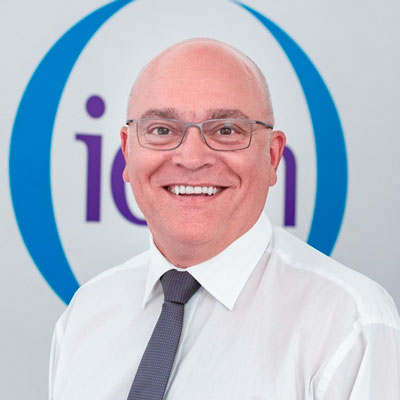
 United Kingdom
United Kingdom

Topic: 未来のビジネスリーダー =より健全なパフォーマンスと生産性=
COVID-19パンデミックへの対応、職場の人口構成、技術や仕事の進め方など様々な変化に伴い、企業には持続可能で責任あるビジネス運営がますます求められており、世界の潮流として新しい仕事の世界が形成されつつあります。今や管理職やリーダーはどのような結果が得られたかに留まらず、どのようにしてその結果が得られたのかについても重要視しなければなりません。その核となる部分が優れた労働安全衛生(OSH)マネジメントの実践であり全ての管理職やリーダーが責任の一翼を担うべきと考えられています。持続可能な優良企業は例外なく、従業員の安全と心身の健康、ウェルビーイングに投資をしています。災害を予防し、利益を生むような目標を計画し追求をしています。管理職やリーダーは単なる法令遵守を超えて、従業員のウェルビーイングがいかに評判や競争上の優位性をもたらすかを理解しなければなりません。彼らは外に目を向け、事業を展開する地域社会を大切にしなければなりません。また、環境や社会への影響を軽減するように努め、すべての行動において社会的利益の原則を考慮する必要があります。このような企業は、成長や改善のための手段を積極的見つけることができ、長期的に積極的な変革を計画する管理職やリーダーを求めています。このようなリーダーやマネージャーは、レジリエンスの高い組織を構築し、高い評価を得て、より多くのビジネスを獲得することができます。このような企業は、優秀な人材の採用と維持が容易で、顧客との関係も良好になり、地域社会からも支持されるようになります。つまり、優れた企業はマネジメントやリーダーシップの枠組みの中心に労働安全衛生(OSH)を取り入れることで、より成功するのです。このセッションでは、職場で優れたOSHパフォーマンスを発揮するために必要なコア・コンピテンシーについて議論し、優れたOSHリーダーシップ、マネジメントの実践が企業DNAを通じて、どのように推進されているか紹介します。
Sub chairs


Presentations
This panel session specifically focuses on driving OSH through corporate governance and sustainability – how do we influence the boardroom so that OSH is at the heart of and in the DNA of the organization from the very top down.
This panel will further discuss a business case for OSH leadership, arguing for a Healthy Profit as a way to achieving responsible, sustainable national and corporate success, among other things looking at the importance of reporting metrics on OSH.
This panel session discusses the complexities in improving OSH across key supply chains, and it showcases examples of how the ILO Vision Zero Fund focuses on improving OSH in key sectors, how investors such as ADB support good OSH practice in their projects and will also showcase outstanding OSH practices that have been driven throughout a collaborative manufacturing process. We conclude this session with views on the OSH and supply chain related challenges faced by businesswomen and female workers across the Commonwealth.
In this last panel discussion, we will try to bring the previous three discussions into a very practical focal point and discuss what can be done collectively to help advance the core competencies required to deliver excellent OSH performance in ALL work settings – especially in hard-to-reach working settings, like SMEs, along the supply chains. The key message is that “no one can thrive unless we are all safe”, so it is our moral imperative collectively to strive towards a safe and healthy world of work for all.

 Switzerland
Switzerland

Topic: 前向き先行指標(Proactive Leading Indicator: PLI)の活用がビジョンゼロを推進する
前向き先行指標(PLI)は国際社会保障協会(ISSA)が、ビジョンゼロに取り組む企業や団体が、その取り組みレベル、規模の大小、国際展開の有無にかかわらず活用して頂けるようにした無料提供ツールです。前向き先行指標(PLI)は、組織内部の安全・健康・ウェルビーイング向上のみならず、サプライチェーンのような社外パートナーでも用いることが可能です。また、他社とのベンチマークの為に使用するなど多様な目的で利用できます。PLIはビジョンゼロを推進し実践する組織、科学文献、国家機関、産業界などから提供される情報源や根拠、並びにプロジェクトチームや専門家や運営委員会の持つ専門知識や経験をもとに作成されました。このセッションでは、この指標の科学的根拠を示し、実用的な解決策の提供や応用例、また、企業による成果をご紹介します。
Sub chairs


Presentations

 Japan
Japan

Topic: ヒューマンファクターを考える-安全で安心な福祉社会の実現に向けて
このセッションでは人間の行動原理の原則の概要と、行動分析を用いた実験の数例をご紹介します。行動分析においては、人はシステムの一部と考えられています。さらに、人の行動を管理、予測、量的評価することで、生産効率や安全行動を最適化する例を紹介します。機械安全リスク低減策における行動分析技術の使い道についてディスカッションを行います。将来、事故の予防、安全の確保だけではなく、罰則ではなく報酬のようなポジティブなサイクルによって、幸福や福祉が向上するよう社会システムを変えていく事が必要になります。行動分析はシステムを構築するうえで効果あるのです。
Presentations
パワード外骨格は、脊髄損傷(SCI)の患者の独立した歩行をサポートするために使用され始めています。 これまで、歩行支援の方法論や外骨格の使いやすさについての報告がいくつかありますが、現在の状況では、セラピスト自身の労働安全対策についてはほとんど検討されていません。 介護者の安全チェックリストを作成するという目標の最初のステップとして、本研究では理学療法士の行動を観察および分析しました。

 Japan
Japan

Topic: ロボット工学と協調安全
近年のIoTデバイスの進歩は、人と機械の協業や、安全のための協働を可能にしています。
製造業に限らず、様々な労働環境において、人、ロボット、あるいは多様な機械が、
時間と空間を共有して活動する際の、安全技術、慣習、標準化に関する報告を集め、課題について議論します。
Presentations
The talk will briefly present the results of recent scientific studies that should be taken into account when considering human-robot safety. Biomechanical corridors from human subject studies, based on pain thresholds, show human body stiffnesses and limits. They can be used for a safe operation of a power- and force-limited robot.
協働ロボットが多くのモノづくり分野で活用されるようになった。一方で、ワークや治具などの挟まれリスク対策の課題が多く、今後のより実用的な安全、安心の確保、助けあえる手段としての研究・開発が望まれる。本報では自動車製造ラインの協働化事例、サイバーフィジカルシステムを活用した人の身体的な負担感把握事例について話題提供する。今後の人を中心とした協働化、協調化の課題と展望について議論する。
This talk will take a look at current trends in human-robot collaboration with a few examples of recent activities in this field. Finally I will identify and briefly discuss some key trends for the future of the field.
There are many kinds of autonomous ground vehicles and this presentation focuses on autonomous mobile machines and mobile robots. Autonomous mobile machines are applied in outdoors applications and their safety systems rely usually on access control and on-board safety systems. The mobile robots are used often indoors and there are plenty of suitable on-board safety sensors to be applied. Currently one common challenge with both autonomous mobile machines and mobile robots is that there are plenty of different applications and the current requirements are written only to specific cases. The variety of mobile vehicles is increasing.
Robotics have long been used for dirty and dangerous tasks, thereby contributing to reduced risks for workers. With the “new normal” requiring resilience and agility – despite the labour shortage, greater automation is needed. Smaller robots and mobile robots enable the automation of tasks that are dull and injury prone. Often the solution is partial automation to work collaboratively with people. The results are fewer ergonomic strains, sprains and injuries while experiencing increased productivity.
We newly established risk reduction system, named “Safeguarding Supportive System (SSS)”, which is proposing to ISO. It is established to prevent human error and intentional unsafe behavior from mechanical side (hardware side). The SSS would reduce residual risks with appropriate ITC combination. We examined efficacy of the SSS at a rental company of portal workbench. We examined 1) whether RF-tag system was adequately operated by workers, 2) whether UWB-active-RFID system precisely monitored and captured workers movement and location in real time, and 3) whether gateway monitor system appropriately monitored entering into and leaving from the work zone. As results in the present study, there were no differences in relative ratio of correct count, safe failure and dangerous failure in zone A1 and those of B1. Time and trace of movement of workers were recorded by UWB active RFID system. Also, the system could be confirmed of state of the simultaneous works of more than one worker.
少子高齢化に伴い労働力不足が加速し、手作業の生産現場で安全柵なしで自動化できる協働ロボットの需要が急増している。この発表では、安全面含めて、初めてでも簡単に使える協働ロボットの特徴と、適用事例を紹介する。
Presented as a key to competitiveness, collaborative robots are generating a lot of interest in the industry. Many see it as a way to combine human know-how with the endurance of these robots designed to work in proximity to workers. Nevertheless, collaborative robotics raises the question of how to integrate them into companies because of the new human-robot coactivity that it implies. This can lead to physical risks but also to psychological constraints. The conference reminds us of the importance of a global risk prevention approach when putting in place a robotic cell. The consideration of human and technical factors throughout the deployment process ensures a successful integration. The different technical and organizational solutions are addressed. Finally, the conference opens on current and future developments in terms of AI, mobile robotics, etc.
サービスロボットやアシストスーツなど人との協働作業を目的とした機械が登場している。これらの機械は、作業者の行動や動作を期待して効率的な協働作業を実現する。従って、これまでの後付けの安全対策では不十分であり、協働作業内容に安全制御(機能安全)を考慮する本質的安全設計が求められる。さらに、そのリスクや安全対策は、人と機械の関係性によって動的に変化するため、動的リスク管理が前提となる。協働機械の安全性については、ACOSやIEC白書において議論が進んでおり、本発表はその最新状況について解説する。
これまでは、人間の行動は予測できないという認識のもと、予測される事故のイメージや必要な安全対策が議論されてきました(事故防止型安全)。今後、人間とロボットが協働するためには、人間の行動を予測する技術が必要です。つまり、人間のモデリングが重要です。個々の人間を正確にモデリングすることで、AIなどの技術を使って人間の行動を予測することが可能にし、個人を正確にモデル化することで、その人に合った作業支援が安全を維持しながら可能になります。それが生産性の向上につながります。つまり、安全性を向上させることで、個々の人間管理を可能にし、生産性を向上させることができるのです。これは新しい安全概念(Productive Safety)であると言えます。
Currently, when discussing the safety of industrial robots in collaborative work systems, pain is the norm and the protective interval distance is determined. However, as robots coexist in closer proximity to humans to service them, the protective spacing distance alone becomes irrelevant to the discussion. In this presentation, I would like to ask the following question: depending on the frequency of human-machine contact, can the norm of internal bleeding as well as the norm of pain be determined as the upper limit of safety data? This is the position that ISO/TR 21260 is based on.
Due to the difficult challenge of construction and a shortage of labor, we started our development of working robots in 2016. The robots have the ability to work while moving to the next location autonomously. We have designed these robots to be functionally safe and to incorporate risk avoidance. Safety management of robots and workers has also been taken into account.
The implementation of robots began last year. We would like to introduce the feature of the safe and effective robots.

 Japan
Japan

Topic: 製造業における現場での安全衛生活動
このセッションでは、さまざまな国の職場におけるVision Zero活動と安全衛生活動(ゼロ災キャンペーン)の例をご紹介します。製造現場においての労働災害、労働疾患、そして、リスク要因の削減、そしてゼロにすることが目的です。Vision Zeroは、あらゆる災害、疾患、傷害が予防可能であり、安全・健康・幸福であることは基本的な価値であるという考えを共有する企業や団体を巻き込んだグローバルなキャンペーンです。現在、1万以上もの企業や団体がこのキャンペーンに参画しており、その数は毎年増加しています。このセッションを通じて、労働におけるゼロ災を達成するための国際的なネットワークの構築を目指します。
Sub chairs




Presentations
IDECにおける安全文化構築の活動内容を紹介します。安全文化は4つの段階を経て進化します。
反応する段階 → 依存する段階 → 自主的な段階 → 啓発し合う学ぶ段階
安全文化を進化させるためには強い原動力が必要です。IDECの活動の特徴は、Vision Zero 7 Golden Rulesを活動の支柱としていることと、組織内にBelongingを醸成する巧みな取り組みを行なっている事です。Belongingとは、自分らしく能力を最大限に発揮しながら組織に関われる心地良さを感じることですが、Well-beingの重要な要素です。具体的な報告内容は以下のとおりです。
1.経営幹部のリーダーシップ
2.ISO45001マネジメントシステムがもたらした効果
3.Belongingを醸成する強力な2つのツール
・気付き報告
・リスクアセスメント活動シート
4.職種に応じた安全資格取得を奨励する人材育成

 Japan
Japan

Topic: ウェルビーイングとSDGs
ウェルビーイングはビジョンゼロによる労働安全衛生(OSH)の活動において新しく取り入れられた考え方です。世界的な新たな潮流として、多くの企業や団体がウェルビーイングをマネジメントにおける一つの重点目標として捉えるようになっています。ビジョンゼロはこのトレンドを支持することにより、充実した労働生活と事業の持続的発展をもたらし、SDGsの達成に貢献します。SDGsは現在、そして未来のビジネスや社会にとって、なくてはならない指標です。
このセッションでは、世界中の学術界、ビジネス界のオピニオンリーダーが次のテーマでディスカッションを行います。
(1) ウェルビーイングの概念と役割
(2) 企業経営におけるウェルビーイングと組織的アプローチ
(3) OSHにおける環境変化とウェルビーイングの重要性の高まり
(4)ウェルビーイングとイノベーション、国際標準化
(5)SDGsのとらえ方と組織によるSDGsマネジメント, ESGマネジメント
Sub chairs



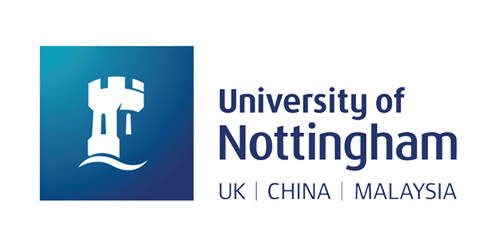

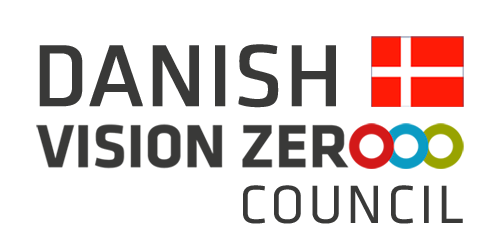
Presentations
Prof. Takashi Maeno will be talking about the well-being management in Japanese companies. First, difference in the score of happiness is discussed.
Individualism and collectivism affect the score.
Then he will talk about the good practice of well-being management in Japanese leading companies.
Finland has repeatedly been selected as the happiest nation in UN studies. How have the Scandinavian countries built an environment of wellbeing and what is the role of private companies in it? How do private companies align their actions to support wellbeing with UN Sustainable Development Goals? Examples from Metso Outotec, which is among the top 100 most sustainable corporations in the world, and from Greenstep, which is a fast growing professional services company.
積水ハウスは、グローバルビジョンとして“「わが家」を世界一幸せな場所にする“を掲げています。
お客様に幸せを提供し、社会の幸せを実現するためには、従業員の幸せを追求することが大切です。
従業員と職場の幸せを高めるための幸せ度調査やAIによる健康診断結果予測、ヘルシーチャレンジなどをご紹介します。
The Covid-19 pandemic has accelerated trends in the world of work that are associated with both opportunities and challenges for health, safety and well-being. This presentation will discuss these while placing special focus on psychosocial risks that are expected to increase in light of developments concerning the changing nature of work, the use of new technologies and the increased prevalence of atypical work arrangements. It will also highlight key dilemmas going forward for occupational health, safety and well-being and associated implications for research, policy and practice.
コーポレートカルチャーを正しく理解することでWell-beingを高め、その結果、イノベーションを生み出す組織へと進化する。
In her presentation Karina will outline the key principles and phases of participatory organisational interventions and provide examples of what type of activities can be developed to improve employee health and well-being in such interventions.
近年、国際社会ではウエルビーイングや多様性などの新しい価値観が求められてきています。
ウエルビーイングに関する29編の報告書に記載されている豊かさの構成要素の共起ネットワーク分析を実施し、豊かな未来を達成するために大切にすべき6つの価値軸を抽出しました。
また、これらの価値軸の先にある社会像を描くとともに、現代社会において、それらの社会像を実現するために取り組むべきイノベーションの事例をとりまとめました。
本講演では、価値軸と社会像を導出する方法を示すとともに、イノベーションの創出に向けたそれらの活用方法を紹介します。
This lecture is about how a large, global pharmaceutical company are working with ensuring mental well-being and preventing work-related stress. Mental health data can be used to ensure the necessary senior management commitment to employee mental health and well-being. Furthermore the speaker will share how the company in practice works to ensure continuous improvements in the psycho-social working environment
従業員のウェルビーイング(健康)を経営上の重要な資本と捉え、従業員のウェルビーイング向上に向けた活動を積極的に実施または支援をする企業が増加している。この企業活動は、SDGsのポリシーの浸透や目標達成に向けた大きな推進力になりうる。そこで、現在、国際標準化機構において、このウェルビーイング(健康)経営の国際標準化を検討しているので、標準化の活動について報告する。
Many danish organizations are focused on working with STG’s. They are eager to contribute to balancing use of the world and in this regard all managers are decisionmakers. This speak will focus on managers unique role in contributing to both organizations development in a more sustainable way and wellbeing among employees. Mental surplus is needed if we should be able to innovate and at the same time notice small signs of dissatisfaction among employees.
The hypothesis is that managers own wellbeing is absolutely essential for success – this is our focus!

 Finland
Finland

Topic: より高度な教育、オンライン学習、資格認定を通じた労働安全衛生(OSH)能力の向上
ビジョンゼロは安全・健康・ウェルビーイングの世界的な推進を目指します。「学び」はビジョンゼロの実現においてキーとなります。このセッションでは、 労働安全衛生(OSH)に対する意識を高め、且つ専門知識を強化する為のツールを提供し、キャンペーンやトレーニングプログラム、活動を紹介し、OSH力構築の多様な側面に焦点をあてます。また、トレーニングの機会だけではなく、現在、そして将来の課題についても触れます。教育や仕事の現場でOSHを学び、トレーニングするには、どのような方法が効果的であり、有意義な学びにつながるのか?何がどのような理由で役に立つのか?このセッションは経験を共有する場とし、従来の手法から革新的な手段、さらにはeラーニングやバーチャル・リアリティを使ったトレーニングの組み立て方や実施方法など、デジタルトレーニングもご紹介させていただきます。また、世界的なパンデミックが世界中の高等教育やOSHトレーニングにどのような影響を与えたのか、そしてその経験から得た学びは将来にどのような影響を与えるのかについても議論します。
Sub chairs




Presentations
This presentation will begin with a short review of International Occupational Hygiene Association Education Committee activities. It will also provide an overview of past, ongoing, and proposed international collaborations in education, training, and credentialing. Future directions and goals for building capacity in the profession of occupational hygiene will be discussed.
This presentation will report on the findings of an exploratory study that investigated whether and to what extent the UN Sustainable Development Goal of promoting decent work globally has already been integrated into the academic study programs for future OSH professionals in a number of European countries. Based on this data, recommendations are made on how future business and social leaders can be better empowered to address the global challenges.

 Japan
Japan

Topic: 安全、健康とウェルビーイングための国際標準化
ICT、AIやロボット工学が急速に発達する現在、新しいテクノロジーが、いままで不可能であったOSHの新しい手法を可能にております。未来のOSHはどのようなものか、またどうのようであるべきかが、IEC MSB白書「将来の安全」(2020年11月発行)で示されてきました。そしてISOは、人と協働するロボットが労働者の安全を維持しながら、どのように機能すべきかにも取り組んできました。このセッションではテクノロジーが適合性評価基準のような国際標準と共に、どのように発展していくべきかを取り上げます。
Sub chairs

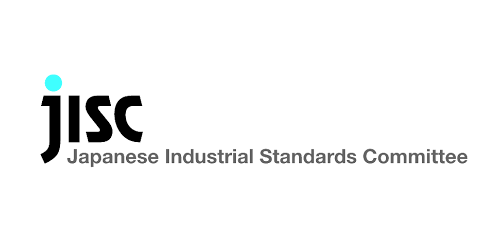
Presentations
As a research institute for OSH in Germany we are very active in national, regional and international standardization. The presentation will show some of our activities in the field of respiratory protection devices, measuring of semi-volatile substances, noise and ultrasonic noise, electromagnetic fields, collaborating robots, security of industrial applications and artificial intelligence use for machinery. From these exeriences with international standardization we have the following expectations to standardazation:
- Standardization on the world level has to be accelerated by using regional input
- With worldwide research direct international standardization is useful
- Old topics with new aspects need new standardization
- When standardize do not forget the persons with disabilities
- Collaborative Safety without Functional Safety is dangerous
- Artificial Intelligence is not Naturally Safe
- Industry 4.0 needs responsible Staff
- Responsible Staff may be a result of a culture of Vision Zero
The Market Strategy Board (MSB) is a unique entity which the ISO or the ITU-T don’t have. The MSB’s primary task is to identify and investigate the principle technological trends and market needs. The overview of the MSB will be provided by Dr Tsutsumi, the Chair of the MSB. Also, the outline of 2020 White Paper project “Safety in the Future” led by Dr Tsutsumi will be provided.
We all know that safety is important; this is not new. However, what does safety mean to a person who is poor, hungry, without shelter (and no electricity)? During my presentation, I hope to create a connection between safety and the holistic sustainability of the global community. I also hope to showcase the role international consensus standards play in creating a safe sustainable society for the emerging future.
安全管理のビジョン拡張の3つの方向性
グローバリゼーションとデジタル化は、安全に関連する状況を含むすべてに変化をもたらしています。 同時に、技術の進歩は安全アプローチを改善する機会を提供します。 このセッションでは、全体的な安全アプローチを実現するための、安全管理のビジョンを拡大するひとつのアイデアが提案されます。 これには、より複雑なシステムへの対処、より多くのインテリジェンスの使用、およびリスクをより広い概念として解釈するという3つの方向性が含まれます。
Different types of trade facilitation mechanisms including mutual recognition agreement (MRA) and their specifics will be explained. Roles of international standards in such trade facilitation mechanisms will be also highlighted to materialize the future society with safety, health and well-being standards.
ISO/CASCOはISO理事会傘下の政策開発委員会であり、適合性評価に関連する問題に取り組んでいます。プレゼンテーションでは、適合性評価の一貫性及び信頼性を確保するためにCASCOが開発した規格を紹介いたします。また、最もよく知られているISO規格であるマネジメントシステム規格に対する認証についても触れます。
For Vision Zero to achieve its objectives it will require the development and implementation of vision based market solutions utilizing forward looking conformity assessment tools and deliverables. By optimizing the utilization of existing solutions while enabling new technologies and the evolving trend of tripartite (human, machine, environment) coexistence, market stakeholders can establish a new norm based in a system of safety.
日本では今日でも年間3万人が不慮の事故で亡くなっている。家庭用製品に関連した重大事故も年間1,000件程度発生しているが、これらの事故のなかには消費者の誤使用や不注意によるものも少なくない。
ガスこんろは、従来から消費者の消し忘れや過熱で多く火災が発生していたが、1990年代に製造事業者が、自動的に過熱を防ぐ装置を開発した。さらに、2008年に政府は、この装置をガスこんろに組み込むことを義務付けたところ、2020年までにこんろに起因する火災は半分に減少した。
こうした事故を防止する取り組みは、SDGsにも合致しており、また、社会や経済に大きな利益をもたらすことからまさにイノベーションである。今後、企業、業界団体と政府が密接に協力して。様々な分野で安全・安心のイノベーションを実現させるべきである。

 Japan
Japan

Topic: AI・ICT とデジタル化
人工知能(AI)は近い将来のあらゆるビジネスにおける、改革において鍵となるものと考えられています。しかしながら、AIの構成要素を含むソリューションをどのように管理するかを知る人はいなく、AIソフトウェアの品質マネジメント技術はまだまだ確立されていません。このセッションでは、AIの質の管理の難しさと、いかに我々が問題を乗り越えるかについて話し合います。特に、AIの品質マネジメントとVision Zeroのコンセプトとの関係性に焦点を当てます。(人と協調労働するAI組み込みロボットについて)
Sub chairs




Presentations
The European Commission is committed to regulate the use of AI. The risk-based approach that will be at the core of the AI regulation will be supported by European standards, some adapted from ISO-IEC, and others developed by European Standardization Organizations like CEN, CENELEC or ETSI. In order to provide the EU with the proper set of standards, a top-down approach is being developed by the CEN-CENELEC JTC 21 taking into account European specificities. Those specificities include the need for actionable standards, the European very broad scope of risk, and the EU regulation timeline which implies approved harmonized standards by the end of 2024.
NIST contributes to the research, standards, and data required to realize the full promise of artificial intelligence (AI) as a tool that will enable American innovation, enhance economic security, and improve our quality of life. Much of NIST’s work focuses on cultivating trust in the design, development, use, and governance of AI technologies and systems. NIST is doing this by—
• Conducting fundamental research to advance trustworthy AI technologies and understand and measure their capabilities and limitations
• Establishing benchmarks and developing data and metrics to evaluate AI technologies
• Leading and participating in the development of technical AI standards
• Contributing to discussions and development of AI policies
Emerging technologies including artificial intelligence are changing the speed and complexity of society. Laws and regulations face a difficult issue: how to keep up with the change. Goal-based governance is better to address the issue than rule-based one. But it comes with another difficulty: big gap between goals and operation. AI Governance Guidelines published by the Ministry of Economy, Trade and Industry bridge the gap. They help companies improve AI governance, which is design and operation of technological, organizational, and social systems by stakeholders for the purpose of managing risks posed by the use of AI at levels acceptable to stakeholders and maximizing their positive impact. The speaker will explain AI Governance Guidelines and their background.
The Risk Evolution, Detection, Evaluation, and Control of Accidents (REDECA) framework was introduced in 2021 to highlight the role that artificial intelligence (AI) in the anticipation and control of exposure risks in a worker’s immediate environment. In this talk, we present a case study that details the implementation of the REDECA framework for occupational safety improvement of agriculture workers. We identify the related safety issues using a systematic process, and offer AI solutions that can improve the associated safety metrics.
After showing several AI case studies in safety, healthy and well-being domain, I explain the IBM’s challenges to manage AI quality supporting the AI case studies.
Presentation contains NEC’s digital business initiatives from the three perspectives of “business process,” “technology,” and “competency,” as well as its case studies.
Fujitsu researches and develops various advanced and trusted AI technologies to make the world more sustainable and to implement a better society. This talk will introduce Fujitsu’s Trusted AI technologies: explainable AI, AI quality and AI ethics focusing on cases from the healthcare and industrial plant domains.
Hitachi published a white paper on AI ethics to promote the management of AI technology.
And, it aims to use AI technology to realize a safe and secure environment for society and workplace.
I would like to these concepts and some use cases.

 Poland
Poland

Topic: アグリカルチャー(農業)における労働安全衛生(OSH)文化の構築
農業分野は作業中における、致命的な事故や負傷の割合が最も高い産業の一つです。安全・健康・ウェルビーイングという3つの側面で労働災害の予防に取り組むビジョンゼロのコンセプトは、農業においてOSHカルチャーを作り上げる為に、どのようにして予防システムを構築するかを提案しています。農業従事者は数多くの様々な危険やリスクにさらされています。このような状況がOSHカルチャーの構築を重要とし、且つチャレンジングなテーマになっています。このセッションでは、現在、農業従事者が作業中に直面している労働災害の実情と、彼らの安全・健康・ウェルビーイングを維持していくための解決策をご紹介します。
セッションは次の3つのトピックで構成されています。
- 環境問題と課題
- 近代技術とAIの活用
- ストレスによる耐えがたい負荷 ーメンタルヘルスとウェルビーイング
Sub chairs

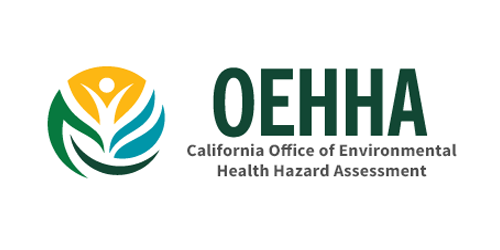

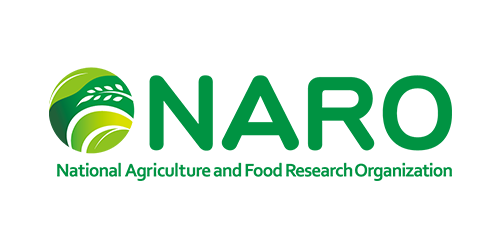
Presentations
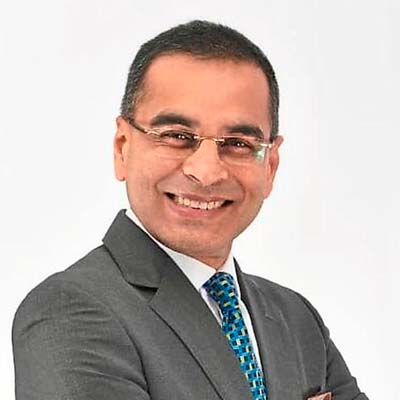
 Malaysia
Malaysia

Topic: 国家戦略としてのビジョンゼロの推進
労働における全ての事故、病気や怪我は予防できるというビジョンゼロの考え方は、政府や社会保障機関を含む多数の企業やパートナー団体によって共有されており、現在も増え続けております。国家レベルでビジョンゼロを推進する彼らの積極的な活動はビジョンゼロの考え方に基づいた予防文化の発展を支援するという、グローバルキャンペーンの目的達成にとって非常に重要な役割を果たします。
このセッションでは、関係省庁、労災補償制度や社会保障団体の上級代表者が、各国におけるビジョンゼロ戦略やプログラムを紹介し、自国でのビジョンゼロ推進に成功した貴重な経験を発表します。ゼロ災に焦点を当てたり、ビジョンゼロをより幅広い予防キャンペーンの一部分として統合したり、ビジョンゼロ推進に特化した新しい国家予防戦略を策定したり、それぞれ国の事情を反映した様々な形式を紹介します。
Sub chairs


